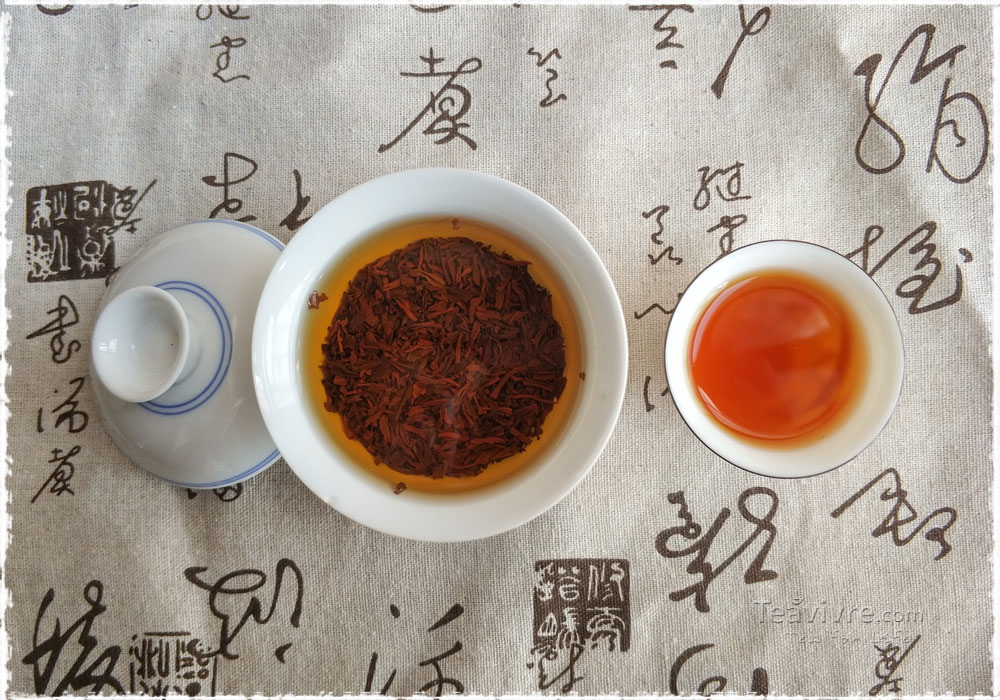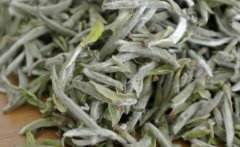What is the origin of the top black tea? how do Keemun Black Tea make the three largest black teas recognized in the world?
Among the four main aspects of tea identity, the provenance is probably the most complex. From climate and weather patterns to the chemical composition of the soil, the country of origin (or terroir) contains a variety of elements that help define the taste of each tea. In addition to the variety, harvest date and craftsmanship, the planting area of tea can tell us a lot about making tea.
However, it is sometimes difficult to distinguish the effects of sources, because specific varieties and production methods are usually used in traditional areas. Many famous Chinese teas are famous all over the world for their environmental characteristics, but now they are also made in other regions to meet the growing market demand. By tasting these five kinds of tea to get familiar with the role of origin in shaping the taste of tea, if they grow in other places, they will not be the same.
1. Longjing before Ming Dynasty
The world-famous Longhong production style, which changes from tea to hot pot flat, is the most common with Hangzhou, it is a common daily brewing, or nearby the picturesque place of the West Lake, where the style is said to come from. Although the area is easy for tourists who want to visit the tea garden and pick their own tea, we prefer to look for Longjing in Pan'an County, which is located in the south, far from the densely populated metropolis.
We found that the tea farmers in Pan'an County have the advantages of a certain distance and high altitude, which can avoid the influence of heavy pollution while maintaining the traditional technological standards. The taste of Longjing tea is familiar, thanks to the soil composition and a deep understanding of the local historical craft style handed down from generation to generation.
In addition, the tea gardens in this area, like the tea gardens where we grow Supreme crops, have one major advantage over the tea gardens that are more accessible on the terrain than on the West Lake: altitude. Although it is not generally discussed in the context of Longjing, altitude makes the tea plant grow more slowly, thus developing a more complex flavor. Our highest crop in Pan'an is the extremely traditional spring Longjing, which has an incredibly rich aftertaste that cannot be found in the coveted West Lake harvest.
two。 White peony
We often compare white tea to champagne because its origin is very important to its flavor, but in the face of overwhelming market demand, white tea is often ignored. Although the most precious silver needle white tea needs to be harvested in early spring to ensure natural sweetness, the more common white mulberry is harvested slightly later and consists of buds and larger leaves. Although all white tea comes from the traditional areas of Fuding County, Fujian Province, the popular harvest date in late spring makes the soil all the more important.
Fuding County, the hometown of white tea in history, is a relatively remote area in northern Fujian. Fujian Province is famous for many different types of tea. Compared with inland areas, the climate here is quite mild because it is located on the coast and in the mountains. This mild climate helps to maintain a slow growth rate, ensuring that the least processed tea grown here has a complex flavor. Because the tea harvested in late spring contains less natural carbohydrates and has a stronger flavor than early spring buds, slow growth is particularly important for making teas without bitterness and astringency.
Similar white tea from other regions is now available in China and around the world, and the price is usually low, which is attractive to those looking for reliable daily drinks. However, these tea plants usually come from inland Yunnan or other inland provinces, and even with the same minimum craftsmanship, they cannot achieve our authentic white peony flavor.

3. Dayulin Oolong
Few teas are as dependent on local soil as Formosa oolong tea. Although Taiwan is relatively small, the tea produced on this subtropical island presents a variety of flavors. At present, the most popular is lightly oxidized oolong tea, which is rolled into small, tight bunches and roasted gently to maintain its natural floral and fruity aromas. Although more and more tea leaves imitate this style in other parts of Asia, Taiwan tea is unique in flavor quality and taste, thanks to its rich volcanic soil and relatively mild climate. and continuous innovation in varieties and production methods.
Although they have many similarities, many oolong teas in Taiwan are often named according to the precise distinction of origin and named after the specific peaks on which they grow. Generally speaking, tea on high mountains is more popular because steep slopes can lead to slow growth and decline in tea production. At high altitudes, regular clouds can form complex flavors during growth and promote carbohydrate storage, giving alpine tea a natural creamy texture and aftertaste.
The color of Dayulin oolong tea is bright and delicate, with a natural sweetness in the white tasting cup.
The highest tea peak is Dayulin, which is located in the Lishan Mountains, nearly 9000 feet above sea level. The extreme altitude makes it very difficult to grow tea here, the land available is limited, and there is usually a risk of frost during the spring harvest. In recent years, tea cultivation in the area has become more scarce as the Taiwan government has reclaimed land to prevent soil erosion. But the obvious difference in the taste and quality of the tea has led to a high demand for the tea, which has rich and complex flavors of orange and sugar cane, with a buttery aftertaste after the last sip.
4. Narcissus
In the northwest corner of Fujian, the unique soil of another mountain defines the entire category of Wuyi oolong tea, giving the tea a unique, mineral-rich flavor grown in this area. The tall rocky cliffs in this area are often described or associated with common nicknames such as "Rock Oolong Tea" or "Cliff Tea". This kind of tea is no exception, it has a strong whisky aftertaste.
However, the smell of this aspect does not make our old forest daffodils stand out. In fact, because the taste given by mineral-rich soil is so common in the region, the difference between this style of tea is usually attributed to the choice of tea varieties rather than to the local culture. The daffodil variety used in this kind of tea is a relatively new variety of Wuyi famous tea, and its pedigree is less prominent than many other varieties.
Therefore, it is not the general local conditions of the region, nor the variety of tea, but a more specific source: the age of the tea tree itself. The surrounding vegetation and the way plants are planted is another important part of the eolian environment, although people seldom think about it. Like more obvious problems such as altitude or soil quality, the tea is targeted at old trees, which provide a more complex natural flavor for the tea, as fewer and fewer new leaves grow each year as the plant matures.
5. Qimen
The last tea on our list is considered to be the original version of English breakfast tea. This is an outdated Roman alphabet, the name of the county where this tea is produced in Anhui, and is now known as Qimen. When tea became popular in Europe, this cut-leaf black tea was developed by daring Chinese tea merchants and quickly became popular among British tea drinkers as a good export choice.
Once the British started investing in Indian tea production, they quickly copied their favorite style with local varieties from Assam, which were more productive and cheaper to produce than the original version from Qimen. After a long voyage to put a can of fresh milk between the farm and the cup, a fuller version from India soon became the new standard for British breakfast tea.
But today, the advantages of purchasing this style from country of origin are clear. The milder climate in Anhui makes tea trees dormant in winter, storing nutrients and releasing more complex flavor compounds in the growing season. Less Rain Water in spring has a stronger flavor and less sunlight, which means that there are fewer bitter and astringent molecules in the finished leaves. The end result is that the taste of the tea is so familiar that it can withstand the test of adding milk and sugar, but it can remain original without additional addition. With this flavor, it is easy to see why English breakfast has become one of the most popular breakfasts in the world.
Important Notice :
前街咖啡 FrontStreet Coffee has moved to new addredd:
FrontStreet Coffee Address: 315,Donghua East Road,GuangZhou
Tel:020 38364473
- Prev

There are several kinds of tea. Chinese tea varieties and brands rank among the top ten.
Tea is usually named as a variety of tea trees, and they are collected from. In the long history of tea cultivation, farmers have developed thousands of different varieties to pursue specific flavors or adapt to specific soils. These cultivated varieties or cultivars constitute one of the four pillars of the characteristics of any kind of tea. But the ultimate performance of diversity also depends largely on the other three identities.
- Next

A brief introduction to the names of the three major beverage tea varieties in the world the characteristics of Yunnan Jinsi Yunnan black tea
We often discuss four factors for each kind of natural tea to develop its unique flavor. Variety, harvest date, origin and technology all play a role in shaping the characteristics of finished tea. However, the weight of these factors in defining quality and taste may vary from category to category or even from tea to tea. In order to understand the impact more clearly, tasting some teas that rely heavily on a single factor can help
Related
- The milk tea cup becomes smaller?! Overlord Tea Girl launches a new "Return to Yunnan" series
- Accused of selling counterfeit and high-priced coffee beans! Well-known boutique coffee brand "Oukelao" bowed and apologized!
- How to make espresso dumplings? Can I eat coffee and glutinous rice balls together?
- Save the unformed and stagnant powder cakes in one second! What is the problem with stagnant water in the powder bowl of the espresso machine?
- What does hand-brewed coffee stop mean? Why is it not recommended to make coffee by hand?
- Is it normal to smell like coffee? Why does coffee smell like alcohol? What's wrong with the strong smell of cold extract ice dripping ice brewed coffee?
- How to solve the problem that hand-brewed coffee extraction takes too long? Why is the water flowing so slowly when making coffee?
- The main points of making Australian white coffee, the proportion details, how does Australian white properly foam and blend the flowers?
- Can ice water make cold extract coffee? What is the difference between room temperature water and ice water for making cold coffee?
- What milk is best for making latte and white Dirty coffee? What is the difference between different brands of fresh milk and pure milk for making coffee?

